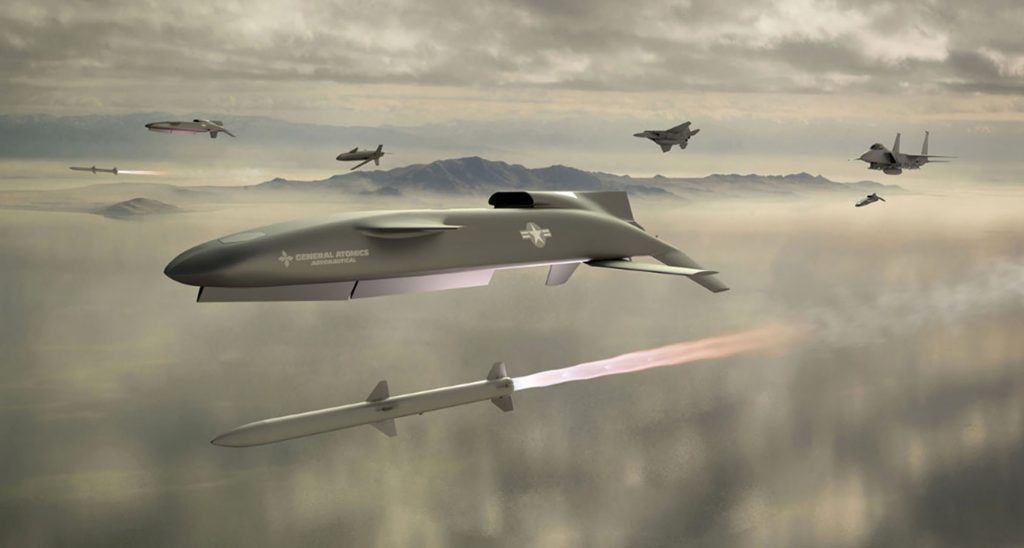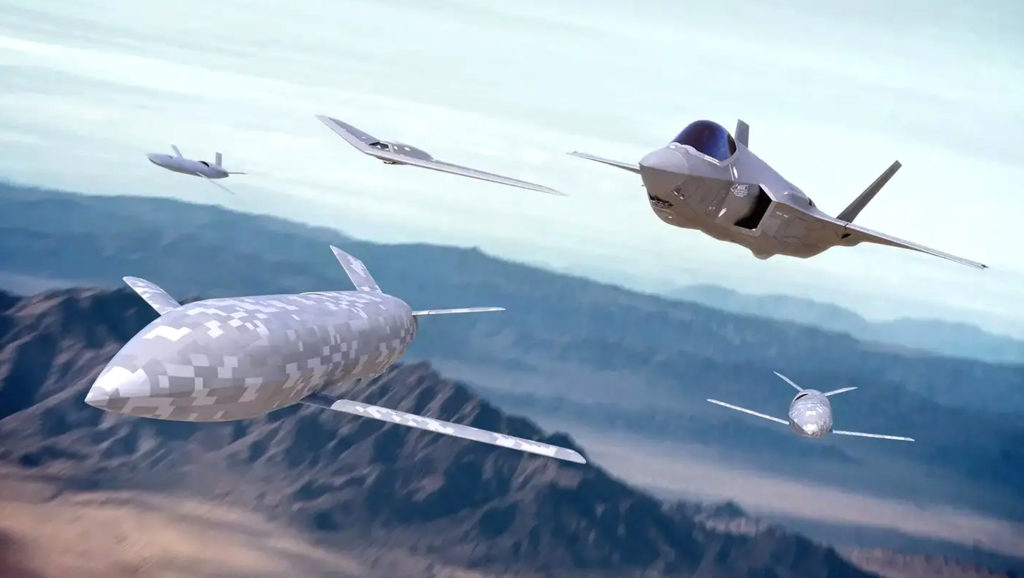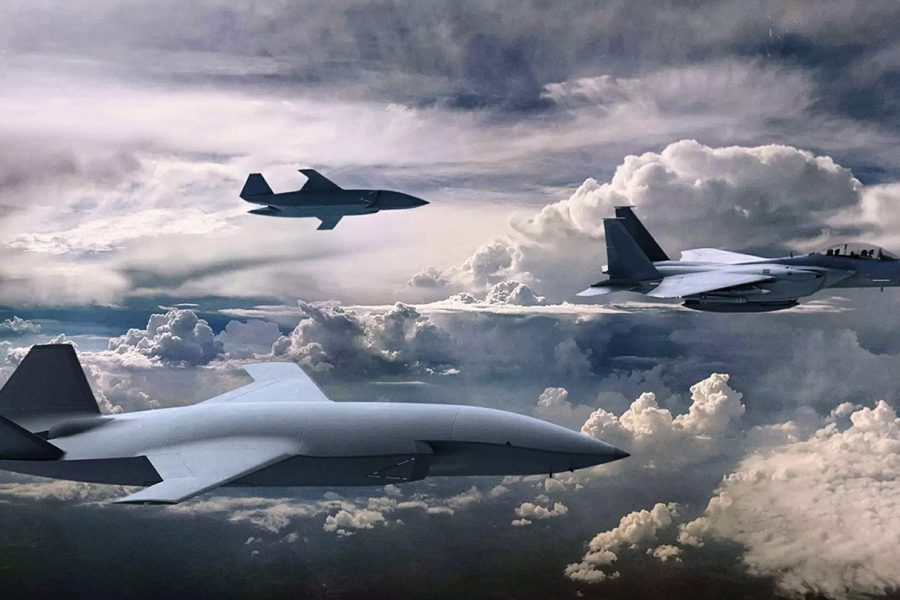AURORA, Colo.—The Air Force is hoping to award at least two and possibly three contracts for the first increment of the Collaborative Combat Aircraft program by the middle of this year, followed by the second increment in 2025, Air Force Secretary Frank Kendall said Feb. 13
There are five contractors vying for Increment 1, which the Air Force plans to be its basic CCA: autonomous platforms intended to carry extra weapons for the fighters they escort, or perform electronic warfare, sensing or other missions. Those companies are Anduril, Boeing, General Atomics, Lockheed Martin, and Northrop Grumman.
“Within just the next few months, we’re going to go from the five contractors to a smaller number,” Kendall told reporters at the AFA Warfare Symposium.
“We’re going to at least two [competitors]; we’d like to have three. Three is going to be difficult, because of the level of funding we have in the budget.” But Kendall said carrying three into “development for production” could be done by sharing costs with industry.
“I think we could do three, and that would be our preference,” he said.
Kendall has frequently said the Air Force wants competition on CCA for as long as possible, to obtain better technical solutions and lower costs.
After the development phase, “we’ll be moving forward in a couple of years to downselect for production,” Kendall said. “How many we will be able to carry on into production is uncertain,” he added, suggesting the Air Force may opt to build two distinct designs if it can afford to do so.

“We will definitely do one, but there’s a possibility that we could do more,” he said. “So we’re going to be working out some way to do that.”
The development contract for the second increment will be awarded in fiscal 2025, Kendall said. Similar to how the service selected five companies to develop plans for the first increment, the first contracts for Increment 2 “would be concept definition, preliminary design type of work.” Kendall added the U.S. could involve some international partners in that increment.
Maj. Gen. R. Scott Jobe, director of force design, integration and wargaming, told Air & Space Forces Magazine that the acquisition enterprise is no longer thinking about the first CCA increment as an “attritable” or “expendable” platform.
“We leave that up to the operational commander, whether he thinks that’s the best way to use that asset,” he said.
Jobe also described Increment 2 as still “a clean sheet of paper.” Although it has been notionally described as a more “exquisite” platform than Increment 1, possibly with a high degree of stealth or sensors, the Air Force is waiting to see what industry will put forward.
“There could be two versions,” he said; one that is a high-end platform, but with variants that are considerably less expensive, perhaps with a single-purpose mission.
Air Force acquisition executive Andrew Hunter added that Increment 2 could potentially have “very different set of requirements,” and the Air Force is still near the beginning of the process.
“We talk a lot to industry: what can you deliver?” Hunter said. The Air Force is looking at “the spectrum of industry feedback” to that question before narrowing its ideas about Increment 2, he said.
In a panel discussion on accelerating the fielding of new equipment, Hunter said there will be no need for a lengthy consideration about who should get the CCA Increment 1 contract or contracts because there is “daily” consultation with the five contractors working on it. They are using digital design methods, and the relative merits of each design are visible on a daily basis, he said, so it won’t take long to judge between them.
In a separate press conference, Hunter said that comments he’s made previously about CCA work—that those companies not selected for Increment 1 could have a later “on-ramp” to participate in the program—meant that those companies not selected for Increment 1 can “roll right into” competing for Increment 2. Other entrants will also be welcome, including some among America’s closest allies.
Those entries may constitute a “Increment 3,” Hunter said, and the Air Force is also comparing notes with the Navy and Marine Corps, which are working on their own CCAs. Those sister-service versions “may [have] their own Increments,” he said.
“I see it as a great opportunity for our partners and allies,” Hunter said, “and a lot of applicability in that space, as well.”

Hunter said the hardest part of CCAs will be their autonomy, but he expressed “a high degree of confidence that we can deliver a useful degree of autonomy in Increment 1,” though perhaps not as much as originally thought.
Later iterations will likely have greater degrees of autonomy, Hunter said. But the focus for Increment 1 has been “speed to ramp,” meaning the quickest route to production.
Jobe noted that in the experimentation underway for CCAs, concerns that pilots in fighters would be task-saturated managing two CCA escorts have proved unfounded. Former pilots in F-22 simulators could comfortably manage up to six CCAs, he said.
